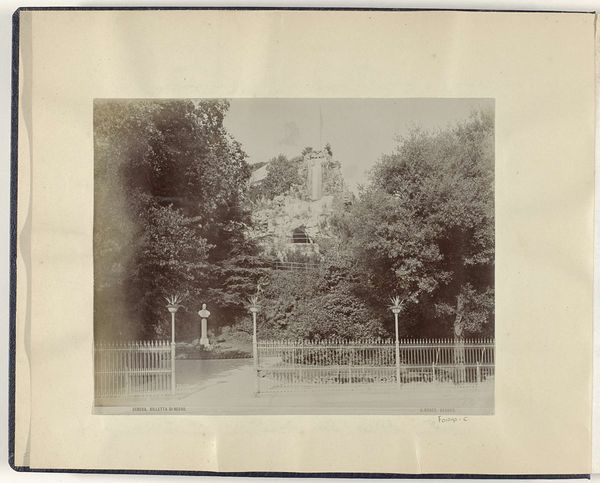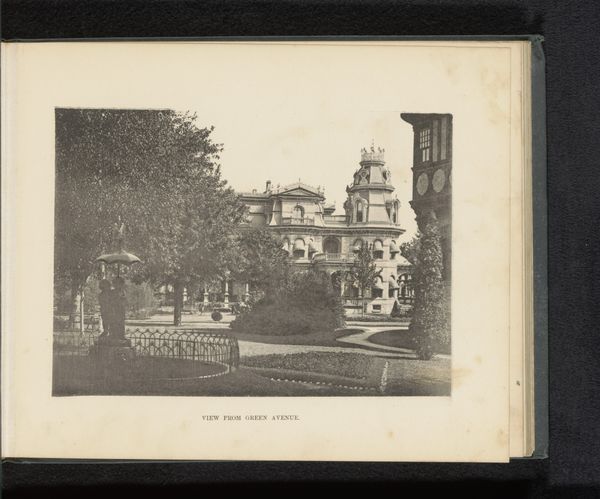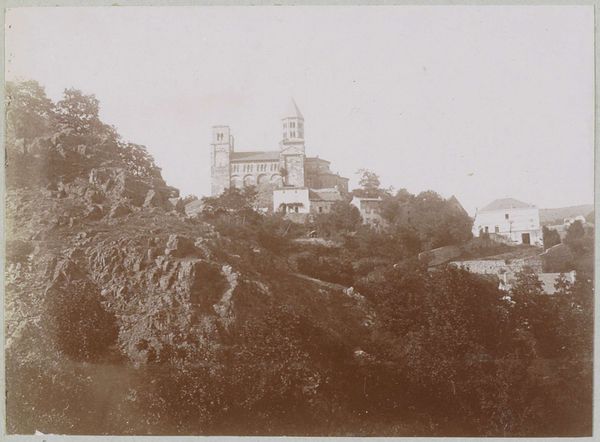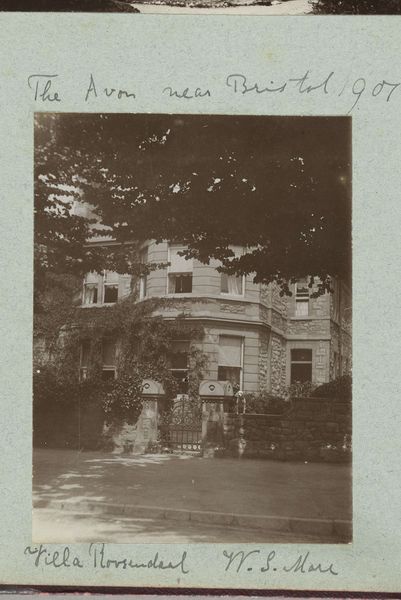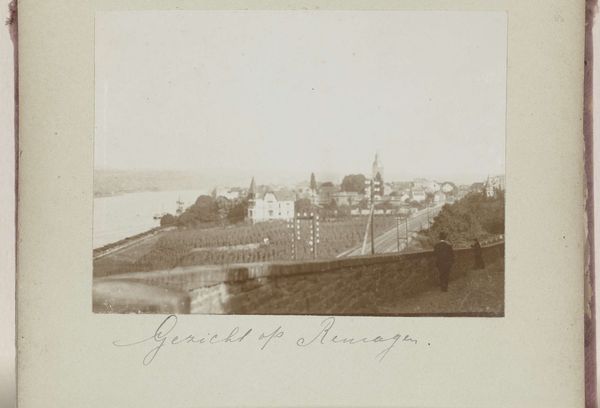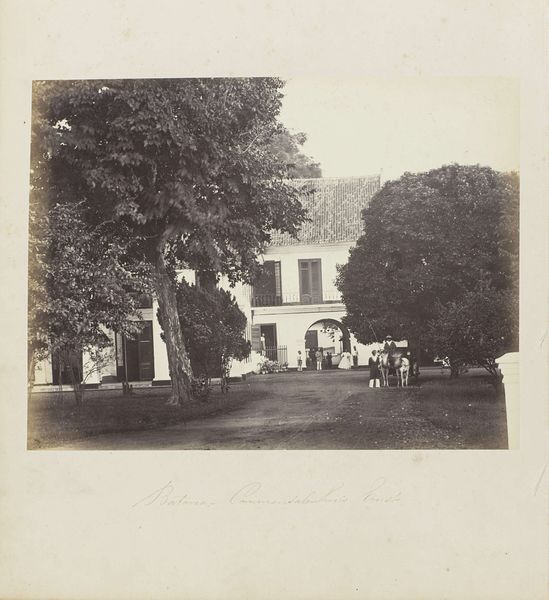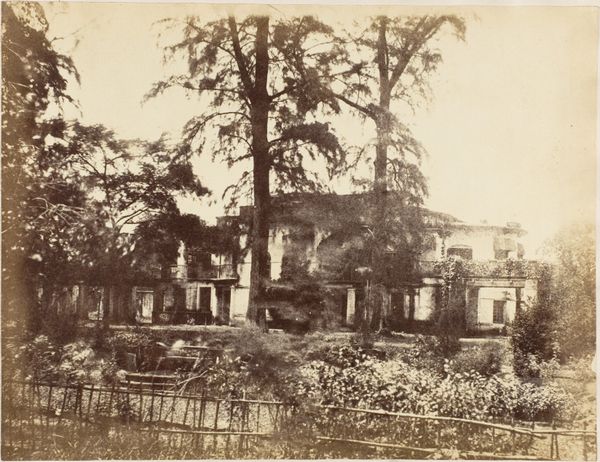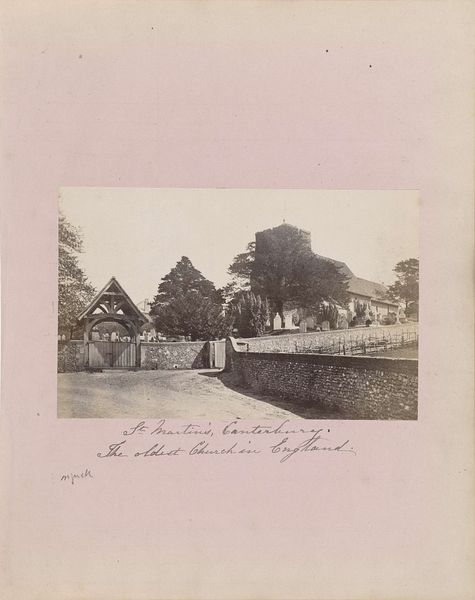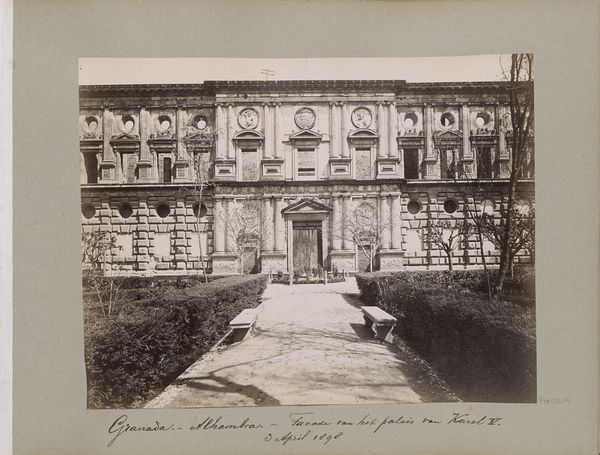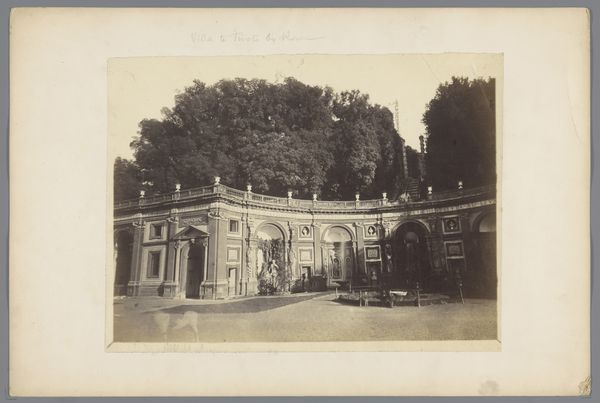
Dimensions: height 86 mm, width 116 mm
Copyright: Rijks Museum: Open Domain
Editor: This sepia-toned photograph captures the “Standbeeld van Germania in Königswinter,” dating back to somewhere between 1895 and 1905. The statue itself is quite striking, regal even, but I wonder, what does its placement within the urban landscape of Königswinter tell us? Curator: It’s crucial to understand this photograph, not merely as an image of a statue, but as a record of civic identity. These monuments, particularly Germania figures, served a specific political function in the late 19th century. What do you notice about its positioning relative to the architecture in the frame? Editor: It’s positioned prominently, yet seems almost hemmed in by the surrounding buildings and the fence. Not quite dominating the space, but certainly present. Curator: Precisely. These Germania statues, often erected after the unification of Germany, were deliberately placed in public spaces. Their presence reinforced a specific narrative of national identity. They projected ideas about power and heritage onto the everyday lives of citizens. How do you think the local residents engaged with such a prominent symbol in their town? Editor: I imagine there was probably a mix of feelings, pride for some and perhaps resentment from those who didn't identify with that particular vision of Germany. Curator: Indeed. Consider, too, who funded the statue. Who was responsible for choosing that location? Exploring the social and political climate of Königswinter at the time gives us insight into the statue's complex role. Was it simply a source of civic pride, or a site of contested meanings? Editor: This photo really makes me think about public art in a new light. Curator: That’s precisely the point. By questioning the power structures embedded within visual culture, we move beyond simply appreciating the artwork’s aesthetics and reveal its significant societal function.
Comments
No comments
Be the first to comment and join the conversation on the ultimate creative platform.
